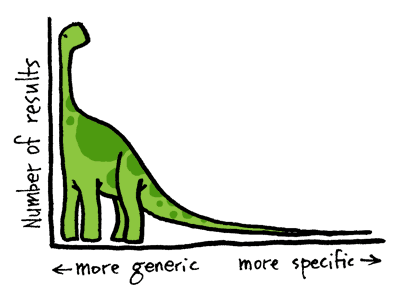Like normal keywords, long tail keywords are used to define what subject content is on the web page. Long tail key words also help provide the publisher with a distinct way for search engines to find and display their pages. Long tail keywords are very specific, and draw less traffic for the website.
 However they tend to draw more quality traffic. This means the leads have a greater conversions than normal keywords.
However they tend to draw more quality traffic. This means the leads have a greater conversions than normal keywords.
When web site or blog publishers use long tail keywords, they are trying to capture or corner a market that might be smaller than normal, but has as much potential as any other, larger, more exposed markets.
Using long tail keywords can also be less expensive when it comes to pay per click biding, and other paid inclusion methods. This happens because there are less people attempting to place bids on those keywords for pay per click ads on search engine results pages.
Visitors use long tail keywords to narrow down their searching request. When a visitor is looking for “big ripe red tomato” it makes more sense to put in the entire phrase. Rather than put in “big tomato ,” “red tomato,” or “ripe tomato” and attempt to manually filter out any of the search results that have nothing to do with big ripe red tomato.
If you chose to work with long tail keywords your success means you need to know which long tail keywords actually get hits or are searched for on the major search engines. Doing your research is the only way to know if long tail keywords will work or not. There is also the opportunity of attracting attention to a particular long tail keyword, which may start to make it more popular and making it more effective.




